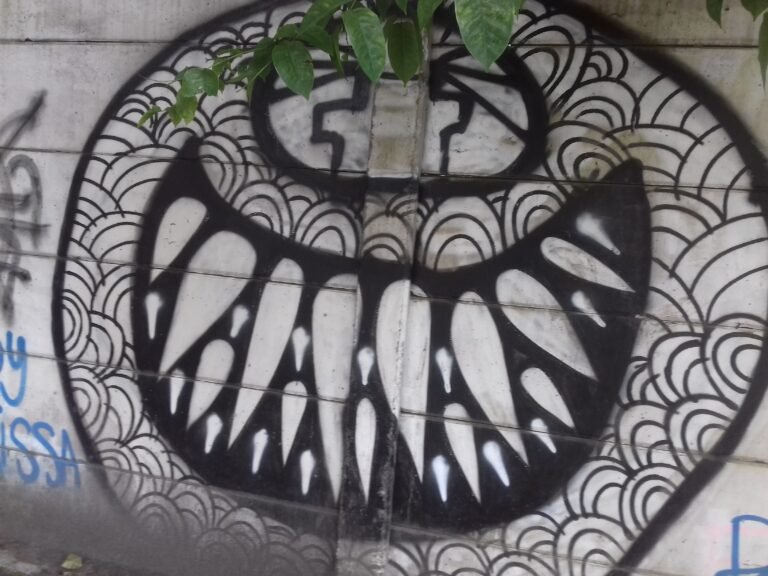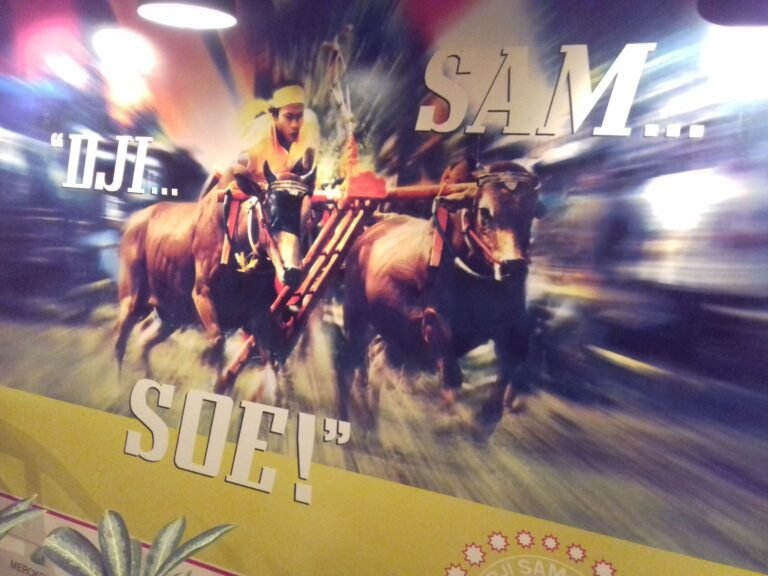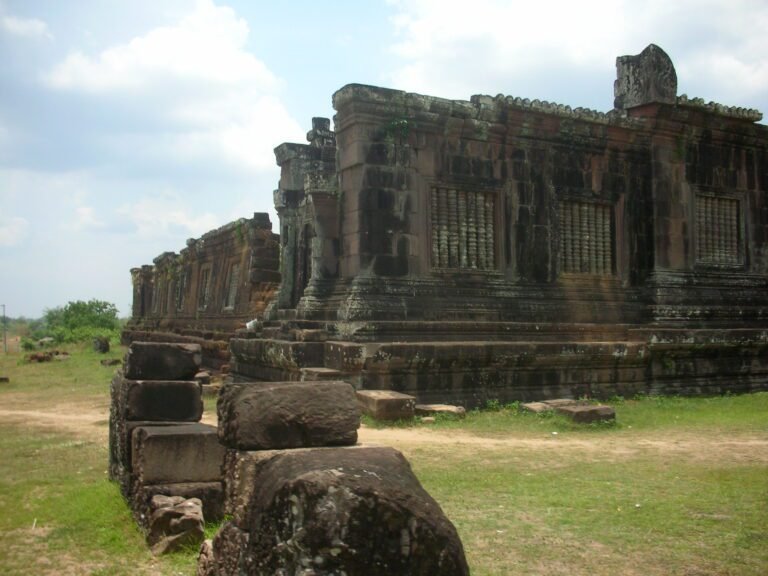At some point, a visitor to East Java hugging the southern coast will alight to Ponorogo. The regency lies on the border of Central Java in Indonesia and, depending on one’s direction, stands as the last line of defence from an encroaching thing or a vanguard heralding the arrival of the self-same force.
It is by the alun-alun that one may know Kota Ponorogo. Open and square, it sits at the city’s heart like a pulmonary system pumping life around it. But even if the visitor did not know where they stood, it should become clear that they have found a place of rare culture.
A walk around the square ferments some fanciful notions as the visitor passes the statue of a giant lion as handsome as David and dark as obsidian rock.
The effect begins subliminally, as though the mind can only slowly process what it absorbs. But soon, indelible ideas take root: a glimpse of peacock feathers. Giant faces, wildly out of proportion with their bodies. Images of felines rendered square and slab-like. Heraldic poses conveying pageantry and mystery.
And like the rising sun, it soon dawns that a unique charge pulses through Ponorogo, that something has found form there. The visitor soon learns the force’s name, for people make no secret of its importance to Ponorogo. They call it Reog, the traditional dance coloured by twists of magic.
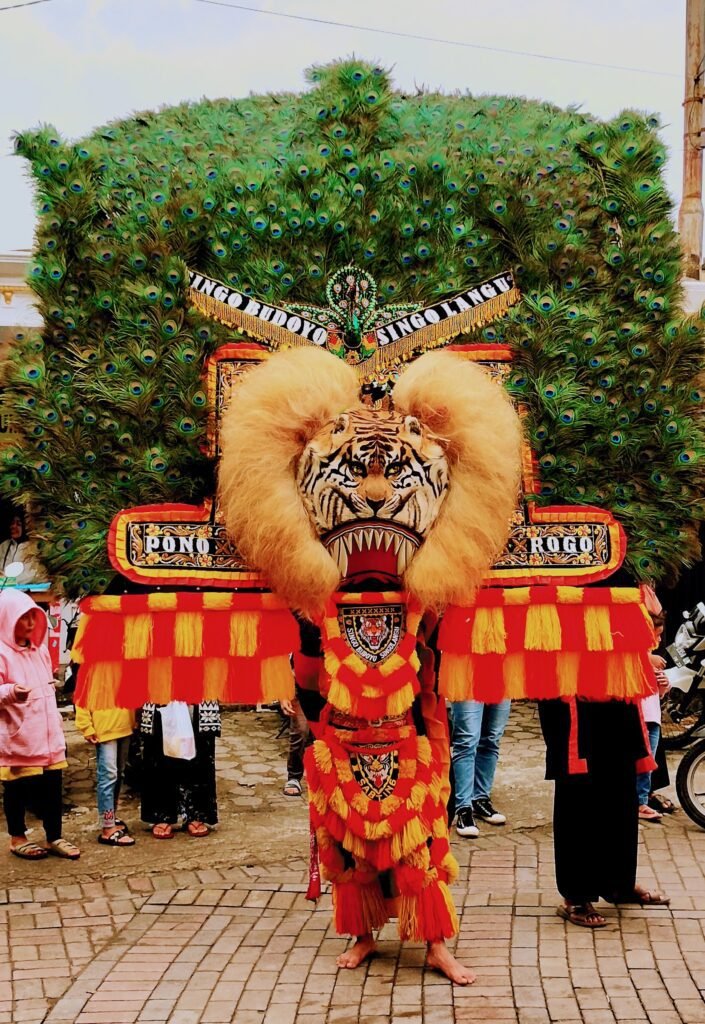
And at once, Reog’s reach becomes clear. The place and the dance have merged. Ponorogo is the home of Reog, and Reog took shape in Ponorogo. And that comes before one notices the props and statues that dot the landscape like a map leading to some cultural hinterland.
Those who spend enough time in Ponorogo will note Reog’s presence at any cultural waypoint. The Islamic holiday of Idul Fitri. The Independence Day carnival, on 17 August. The Grebeg Suro party to honour the essence of Ponorogo. Regular showings at the Paseban pavilion. All around, one may breathe Reog.
Read More: Sickle and Fire: Arek Lancor Symbolises Madura’s Spirit.
In an ideal world, Reog would constantly evolve like a chameleon. While its heart remains the same, its appearance would ever change to defy description. But such shapeshifting does not apply to Reog, whose traits read something like a historical tract if artists, and not historians, recorded the passage of time.
And what should the viewer expect? In short, a lion-headed dancer, whose giant mask sits under a peacock feather decoration of equal size, leading a vibrant ensemble in a series of impassioned performances.
Most vivid is Singo Barong. He is a mythical creature and the enemy of King Klono Sewandono, who, lovestruck, has set out on a journey to propose to the beautiful Songgolangit. The lion has an enormous head made of wood, bamboo and rattan. The mask’s frame extends to depict a giant spread of peacock feathers atop the lord of the plains.
The appearance is nothing less than a big fan, flanked on either side by a velvet-embroidered krakap, upon which one may find written the identity of the Reog group.
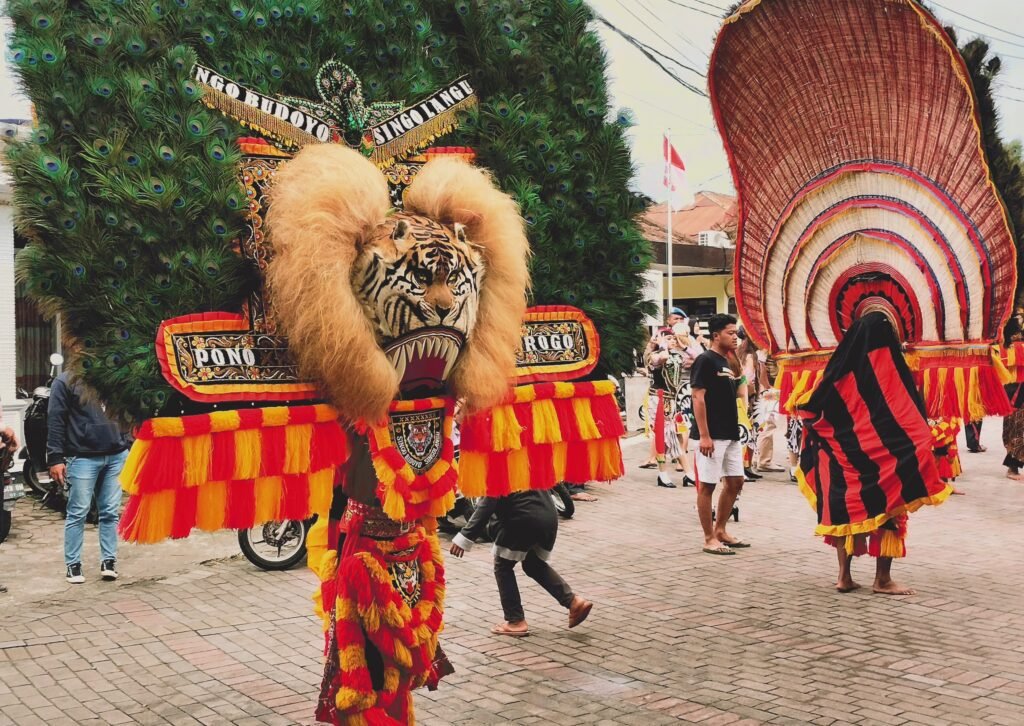
Invariably, the focus flocks to Singo Barong’s outsized head, which spans 2.5 metres. It can weigh over 80 lb and has gained renown as the world’s largest mask. The dancer, known as a warok, bites down on a concealed wooden bar to carry the dhadak merak mask. Such power indicates the huge, bordering on supernatural, strength required to wield the lion’s head. The warok leads the dance and acts as the master of ceremonies.
But lions rarely signify weakness, and Singo Barong gracefully wields his burden. He has the strength to hold the weight of an entire tradition, and his supporting cast makes no less of an impression.
Notable players include the proud and pompous Sewandono, the King of Ponorogo, and the young patih Bijang Ganong, who wears the red mask of a giant. He has a long nose, bulging eyes and thick black hair, and his role often requires two people to perform acrobatic feats in a trance-like state.
Read More: Lawang Sewu: Echoes of Atrocity in Semarang
Equally striking are the jathil, riders of woven bamboo horses. Their effete look satirises the Majapahit cavalry who served Kertabhumi Bhre (who some equated to Brawijaya V), the last king of the Majapahit empire, and whose manliness, some believed, had become diluted. Today’s dance tends to feature female performers in this role, who took over from the gemblak, a teenage boy in vibrant colours.
Reog weaves a historical tale. It follows Klono Sewandono as he heads to Kediri to woo Songgolangit. On his way, he encounters a vicious creature: Singo Barong.
The dance then gathers pace, mocking the bumbling Majapahit rulers of the empire’s last days. Singo Barong embodies Majapahit’s king and the peacock crown, the queen. She sits above the ruler, indicating who held true control behind the scenes.
And thus did the origins of Reog come to pass. One tale centred upon Ki Ageng Kutu, a fifteenth-century Majapahit courtier in the court of Kertabhumi Bhre. By then, the empire had fallen into decadence and corruption, plagued by incompetent rule.
Kutu, noting the empire’s oncoming demise, left the court and found his way to Ponorogo. Hoping to rekindle Majapahit’s former glory, he set up a school to teach mysticism and martial arts.
These strands soon linked into a new form of dance: Reog Ponorogo. Kutu sought to gain support against the decrepit rulers. He succeeded, and the dance soon became one with the city’s currents.
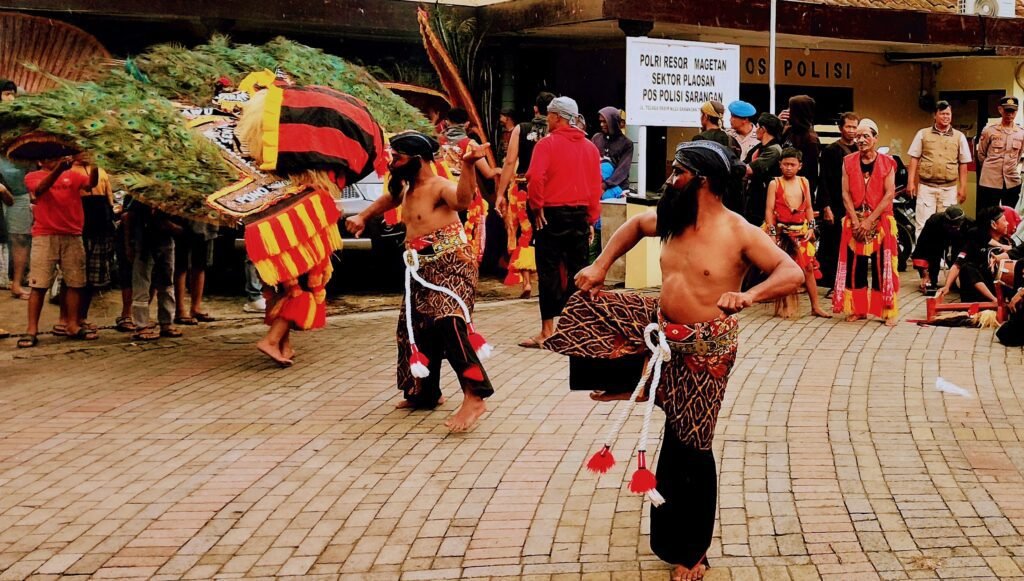
Reog, then; the dance of rebellion. Enraged by the show of dissent that undermined his authority, Kertabhumi Bhre sent an army to smash Ki Ageng Kutu and his followers. A blow was struck; the school fell, but Reog had come to life, and each new performance breathed further life into its veins.
The dance had clamped itself to Ponorogo, and no amount of force could remove it. For how can one dictate a current or control the birth of wind?
Thus, Reog stayed strong as its practitioners continued to perfect their art away from prying eyes. So popular had it become that the King could only watch on as it grew and grew. Soon enough, as the people accepted Reog as the dance of Ponorogo, its stature swelled with the introduction of new plots and characters drawn from the regency’s folklore.
Read More: Rooted in Loss: The Bridal Tree of Salatiga.
Ponorogo is Reog as Reog in Ponorogo; the identity of one takes strength from the other and reciprocates in kind. Singo Barong’s head appears everywhere, from statues to advertisements, as do the other players. The locals are fiercely proud of their heritage and take pride that their home gave form to Reog.
This passion translates into vigour and the noise from which Reog derived its name. Each performance comprises a trio of dances with three sequences involving troupes of up to 35 people. The giant Bujang Ganong opens proceedings before the Jathil take the baton and perform the Jaran Kepang dance.
And finally, all the performers come together for the final sequence, led by the warok. The dance culminates in a tremendous feat of strength as Singo Barong picks up one of the Jathil and carries them atop his mask. All the while, a traditional ensemble, comprising angklung, gedang, gong, kenong and saron amongst others, adds an insistent, reedy urgency to the movements.
Tradition dictates that the Reog dancers perform in a trance in line with the Javanese religious tradition, which looks outward and, by way of rituals and practices, exemplifies the search for harmony, peace of mind and the ties that bind communities as one.
Discover more from Eye in the Middle
Subscribe to get the latest posts sent to your email.

